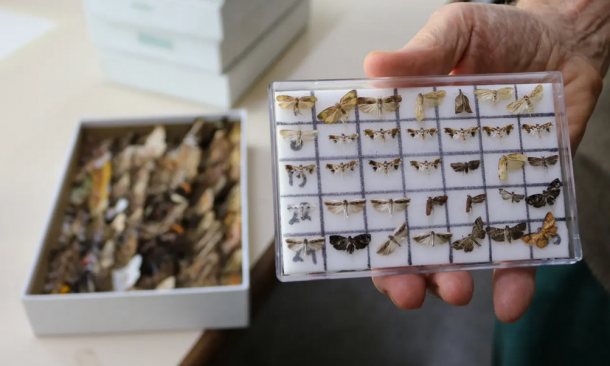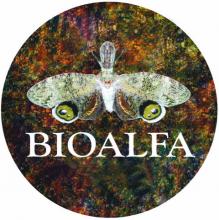
Dr. Dan Janzen holds samples of moths and butterflies from ACG (photo by Patrick Greenfield, The Guardian)
The collaboration between GDFCF, Área de Conservación Guanacaste, and the Centre for Biodiversity Genomics at the University of Guelph, Canada, is featured in a recent article in The Guardian. The article, “Counting the Species: How DNA Barcoding Is Rewriting the Book of Life,” by reporter Patrick Greenfield, calls ACG the most DNA barcoded place on Earth. It details the 2003 invention of DNA barcoding by Dr. Paul Hebert, a professor at Guelph and the scientific director of the International Barcode of Life (iBOL), and how his discovery has revolutionized the quest to know how many species exist on our planet. “It’s a million centuries between every mass extinction event and we’re living in the century that brings the next one,” Hebert says. “We’re talking about the irrevocable loss of knowledge on the largest scale ever experienced by humanity – driven by humanity. Because every one of those genomes and every one of those species: that’s a book of life, and it’s about 10 times bigger than the longest book ever written by any human. So I think history will indict us severely for allowing this erosion of knowledge on an absolutely unprecedented scale.” Dan Janzen and Winnie Hallwachs, this article notes, immediately understood the potential of Hebert’s innovation and are the “major drivers behind Costa Rica’s bid to become the most extensively barcoded country on Earth with a new project: BioAlfa.” This year, half of Hebert’s barcoding capacity has been reserved for BioAlfa, which aims to systematically record and describe all of Costa Rica’s biodiversity. While other temperate countries have undertaken such efforts, the sheer abundance of life in this tropical country makes the challenge different. “Overcoming the taxonomic impediment within its borders by identifying and understanding all of its flora and fauna would be an unprecedented achievement,” says Greenfield. And, he concludes, “There used to be more of everything, everyone is certain, but quantifying what else might be slipping away is hard when there are millions of species left to document. Maybe DNA barcoding can rectify that.” The full article can be viewed here.
